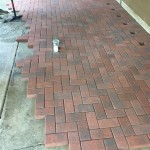How to Install Patio Pavers on Grass
Installing patio pavers on grass can transform a neglected lawn area into a functional and aesthetically pleasing outdoor living space. While traditionally pavers are installed on a compacted gravel base, installing them directly on grass is a viable option for smaller projects or temporary installations, offering a cost-effective and relatively simple alternative. This method, however, requires careful preparation and understanding of its limitations to ensure the longevity and stability of the paved area. This article provides a comprehensive guide on how to install patio pavers directly on grass, outlining each step with detailed instructions. It is important to acknowledge that this method is best suited for low-traffic areas and may require more maintenance than a paver patio with a traditional gravel base.
Before embarking on the installation process, careful planning and preparation are crucial. This involves selecting the appropriate pavers, assessing the soil conditions, gathering necessary tools and materials, and marking out the desired patio area. Neglecting these preliminary steps can lead to structural issues and aesthetic imperfections in the final result.
1. Planning and Preparation
The first step involves selecting the right type of pavers. Consider the size, shape, and material of the pavers, keeping in mind the intended use of the patio. Smaller, interlocking pavers tend to be more stable on grass than larger, individual stones. Concrete pavers are a common choice, known for their durability and affordability. Natural stones, such as flagstone or slate, can also be used, but they may require more leveling and adjusting during installation. The thickness of the pavers should also be considered; thicker pavers will generally provide more stability.
Next, assess the soil conditions. Ideally, the soil should be well-draining and relatively firm. If the soil is predominantly clay or prone to waterlogging, additional drainage measures might be necessary. This could involve amending the soil with sand or gravel to improve drainage or installing a drainage system beneath the pavers. A simple test to determine drainage involves digging a small hole and filling it with water. If the water takes a long time to drain, the soil may require amendment.
Gather the necessary tools and materials. Essential tools include a shovel, a level (preferably a long one), a rubber mallet, a wheelbarrow, a measuring tape, a utility knife, landscape fabric, coarse sand, and a tamper. Additional materials may include edging restraints to prevent the pavers from shifting and polymeric sand to fill the joints between the pavers. Appropriate safety gear, such as work gloves and eye protection, should also be readily available.
Mark out the desired patio area using stakes and string. Ensure that the area is slightly larger than the intended patio size to allow for adjustments during installation. Use a measuring tape to ensure that the area is square and that the layout is symmetrical. Consider the surrounding landscape and any existing features, such as trees or shrubs, when determining the placement and layout of the patio.
Once the area is marked, carefully remove the grass and a shallow layer of soil within the marked area. The depth of the excavation should be approximately the thickness of the pavers plus an additional inch or two for a leveling layer of sand. Use a shovel to carefully remove the grass in sections, ensuring that the edges are clean and even. Dispose of the removed grass and soil appropriately.
2. Installation Process
After preparing the area, the installation process can begin. This involves laying down landscape fabric, adding and leveling a sand base, placing the pavers, and filling the joints between them.
Start by laying down a layer of landscape fabric over the excavated area. The landscape fabric serves as a barrier, preventing weeds from growing up through the pavers and helping to stabilize the soil. Overlap the edges of the fabric by several inches to ensure complete coverage. Secure the fabric in place with landscape staples if necessary. Trim any excess fabric around the edges of the excavated area using a utility knife.
Next, add a layer of coarse sand to the excavated area. The sand will provide a level base for the pavers and help to improve drainage. The depth of the sand layer should be approximately one to two inches, depending on the thickness of the pavers. Use a wheelbarrow to transport the sand and a shovel to spread it evenly over the landscape fabric. Use a rake to smooth the sand and remove any large clumps or debris.
Level the sand using a long level and a straight board. Place the level on the board and drag it across the sand, filling in any low spots and removing any high spots. Check the level in multiple directions to ensure that the sand is perfectly level. Use a tamper to compact the sand, creating a firm and stable base for the pavers. Repeat the leveling and compacting process until the sand is uniformly level and firm.
Begin placing the pavers on the prepared sand base. Start at one corner of the marked area and work your way across, carefully placing each paver in its designated position. Ensure that the pavers are evenly spaced and that the joints between them are consistent. Use a rubber mallet to gently tap the pavers into place, ensuring that they are level with each other. Use a level to check the level of each paver individually and make adjustments as needed.
Continue placing the pavers until the entire patio area is covered. If necessary, cut pavers to fit around edges or obstacles using a paver splitter or a circular saw with a masonry blade. Wear appropriate safety gear, such as eye protection and a dust mask, when cutting pavers. Be precise when cutting pavers to ensure a neat and professional finish. Any gaps should be filled with smaller cut pavers or polymeric sand.
3. Finishing and Maintenance
With the pavers in place, the final steps involve filling the joints between the pavers and maintaining the patio area to ensure its longevity and aesthetic appeal.
Fill the joints between the pavers with polymeric sand. Polymeric sand is a special type of sand that contains polymers that bind together when activated by water. This helps to prevent weeds from growing in the joints and stabilizes the pavers. Sweep the polymeric sand across the surface of the pavers, ensuring that all the joints are completely filled. Use a broom to remove any excess sand from the surface of the pavers.
Activate the polymeric sand by gently watering the patio area with a hose. Use a fine spray nozzle to avoid washing away the sand. Apply water in several light applications, allowing the sand to absorb the water and harden. Follow the manufacturer's instructions for activation, as different types of polymeric sand may require different procedures.
Consider installing edging restraints around the perimeter of the patio. Edging restraints, such as plastic or metal edging, help to prevent the pavers from shifting and maintain the shape of the patio. Install the edging restraints according to the manufacturer's instructions, ensuring that they are securely anchored in the ground.
Regular maintenance is essential to keep the paver patio looking its best. Sweep the patio regularly to remove dirt and debris. Remove any weeds that grow in the joints between the pavers. Occasionally wash the patio with a hose and a mild detergent to remove stains and grime. Avoid using harsh chemicals or abrasive cleaners, as they can damage the pavers.
Inspect the patio regularly for any signs of shifting or unevenness. If any pavers become loose or uneven, remove them and re-level the sand base before replacing them. If the soil beneath the patio becomes excessively compacted, consider aerating the soil to improve drainage and prevent waterlogging.
While installing patio pavers on grass offers a simplified approach, it is important to understand its limitations. The stability and longevity of the patio will depend on factors such as soil conditions, drainage, and the type of pavers used. Regular maintenance is crucial to prevent issues such as weed growth, paver shifting, and waterlogging. For high-traffic areas or projects requiring long-term durability, a traditional paver patio with a compacted gravel base is generally recommended.
This method requires no heavy machinery and less physical strength, it can be a quicker and easier project for homeowners to make themselves.

Diy Patio With Grass Between Pavers And A Fire Pit Backyard Designs

How To Install Pavers Installing A Patio Step By Guide

Diy Patio With Grass Between Pavers And A Fire Pit

Diy Patio With Grass Between Pavers And A Fire Pit

Diy Paver Artificial Turf Patio

Diy Patio With Grass Between Pavers And A Fire Pit

How To Install Artificial Grass Between Pavers Paving Ideas Festival Turf

Laying Patio Pavers Polycor Inc

How To Lay Paving Stones On Grass Hunker

Concrete Pavers With Artificial Grass Magnolia Turf
Related Posts








